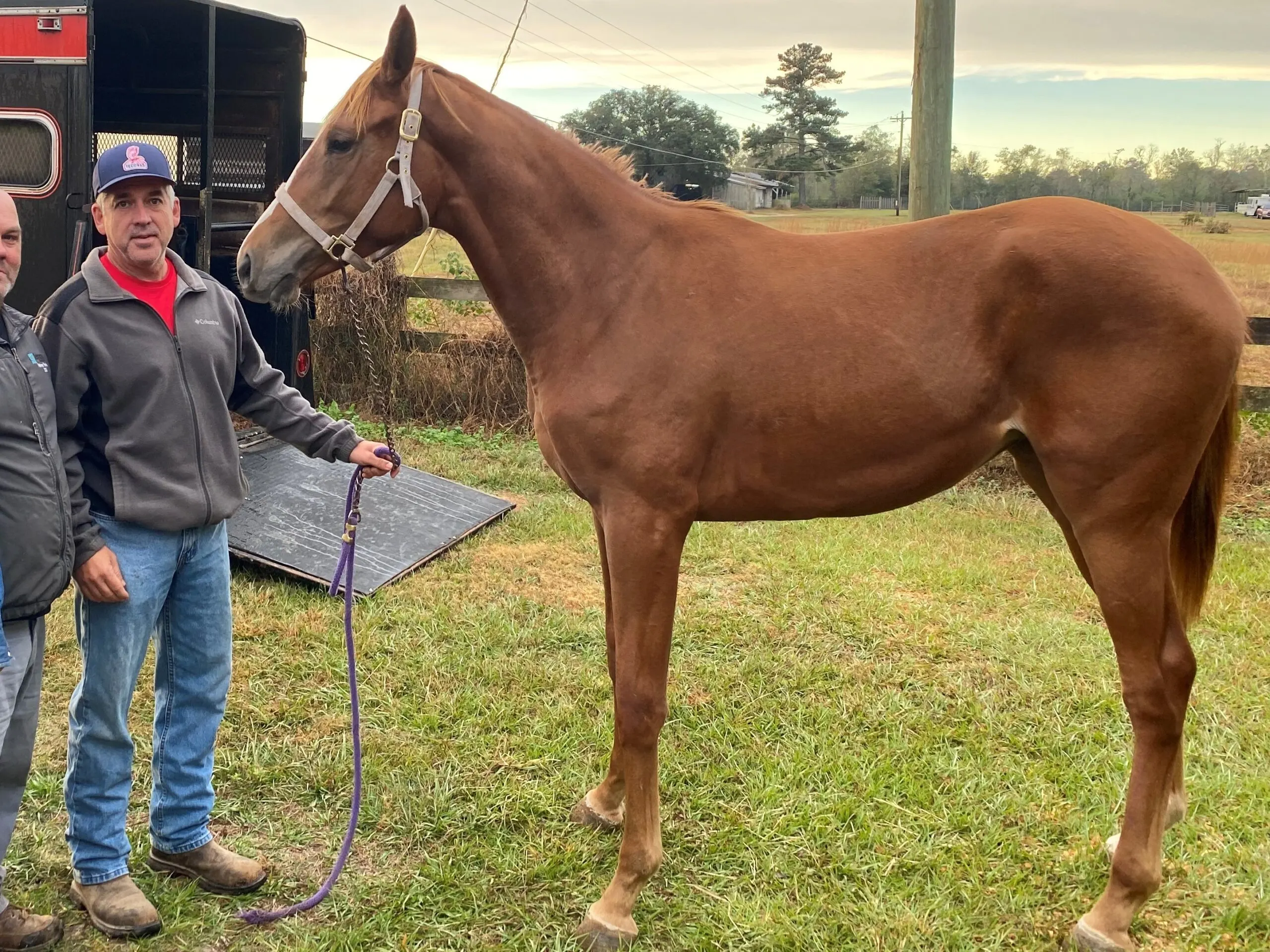Last updated: March 14, 2024
The Clydesdale horse breed is a symbol of strength, beauty, and heritage. Originating from Scotland, these majestic horses have captured the hearts of many with their impressive size and gentle demeanor. In this comprehensive guide, we delve into the rich history, unique characteristics, and fascinating facts about the Clydesdale horse breed.
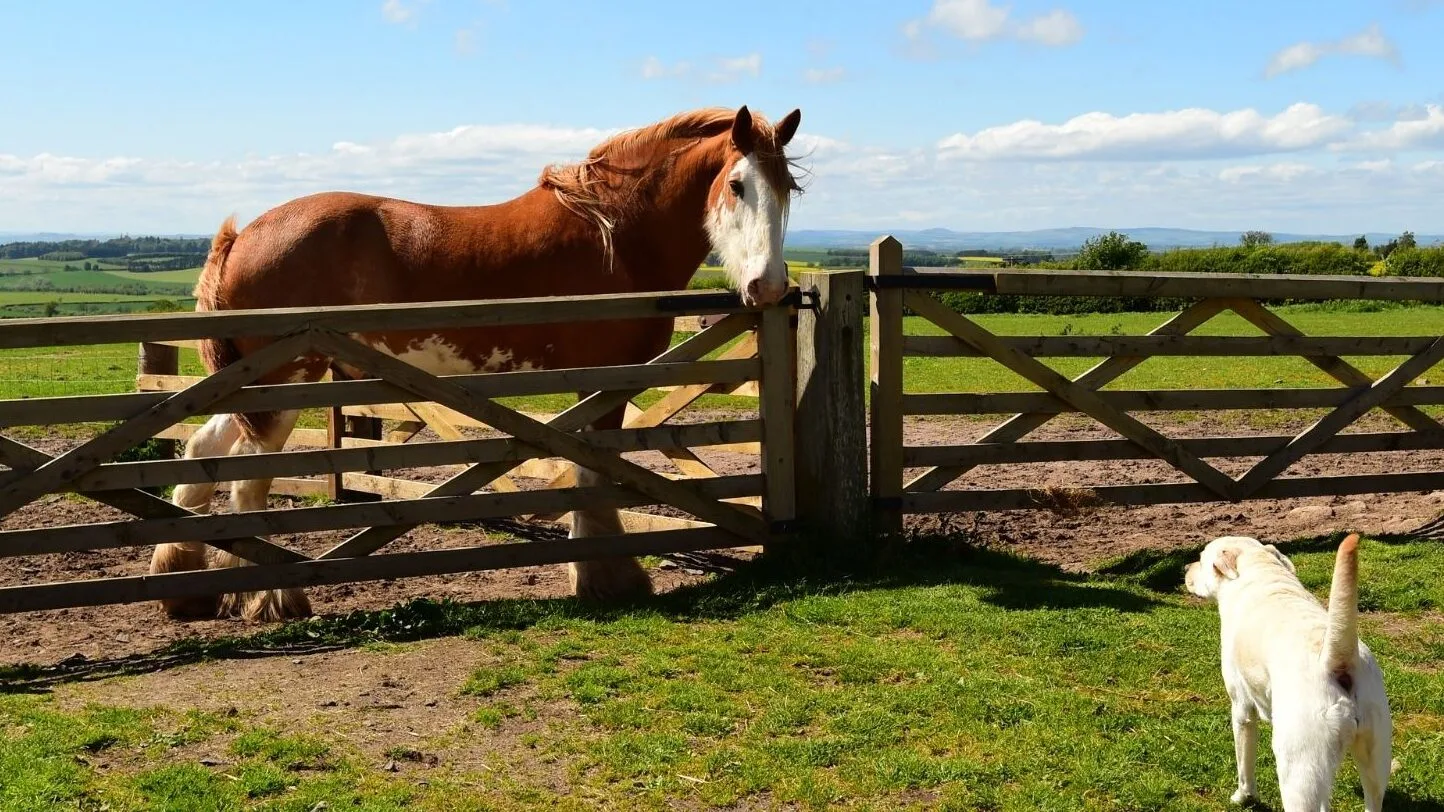
History of the Clydesdale Horse
The Clydesdale horse breed traces its roots back to the Lanarkshire area of Scotland. Originally bred for heavy farm and industrial work, Clydesdales have become iconic figures in the world of draft horses.
Their history is intertwined with the development of agriculture and transportation, showcasing their importance in shaping human civilization.
Evolution of Role:
- Change: Mechanization reduced traditional workload.
- Decline: Numbers decreased due to reduced need.
- New Role: Clydesdales gained popularity for their appearance and temperament.
Characteristics of the Clydesdale
Size and Strength: Clydesdales are one of the largest horse breeds globally, with some individuals reaching up to 19 hands tall and weighing over a ton. Their impressive size and muscular build make them ideal for pulling heavy loads and working in various capacities.
Distinctive Appearance: Known for their striking appearance, Clydesdales have feathering on their lower legs, a broad forehead, and a well-arched neck. Their distinctive bay color with white markings adds to their regal presence.
Temperament: Despite their size, Clydesdales are known for their gentle and docile temperament. They are often described as intelligent, willing, and easy to work with, making them suitable for various tasks and interactions with humans.
Clydesdale Breed Insights
| Insight | Detail |
|---|---|
| Lifespan | Typically mid-20s, similar to lighter breeds |
| Historical Role | Bred for farm work and heavy pulling |
| Breed Comparison | Larger and thicker-bodied than Shires and Percherons |
| Population | Approximately 5,000 worldwide, once a threatened breed |
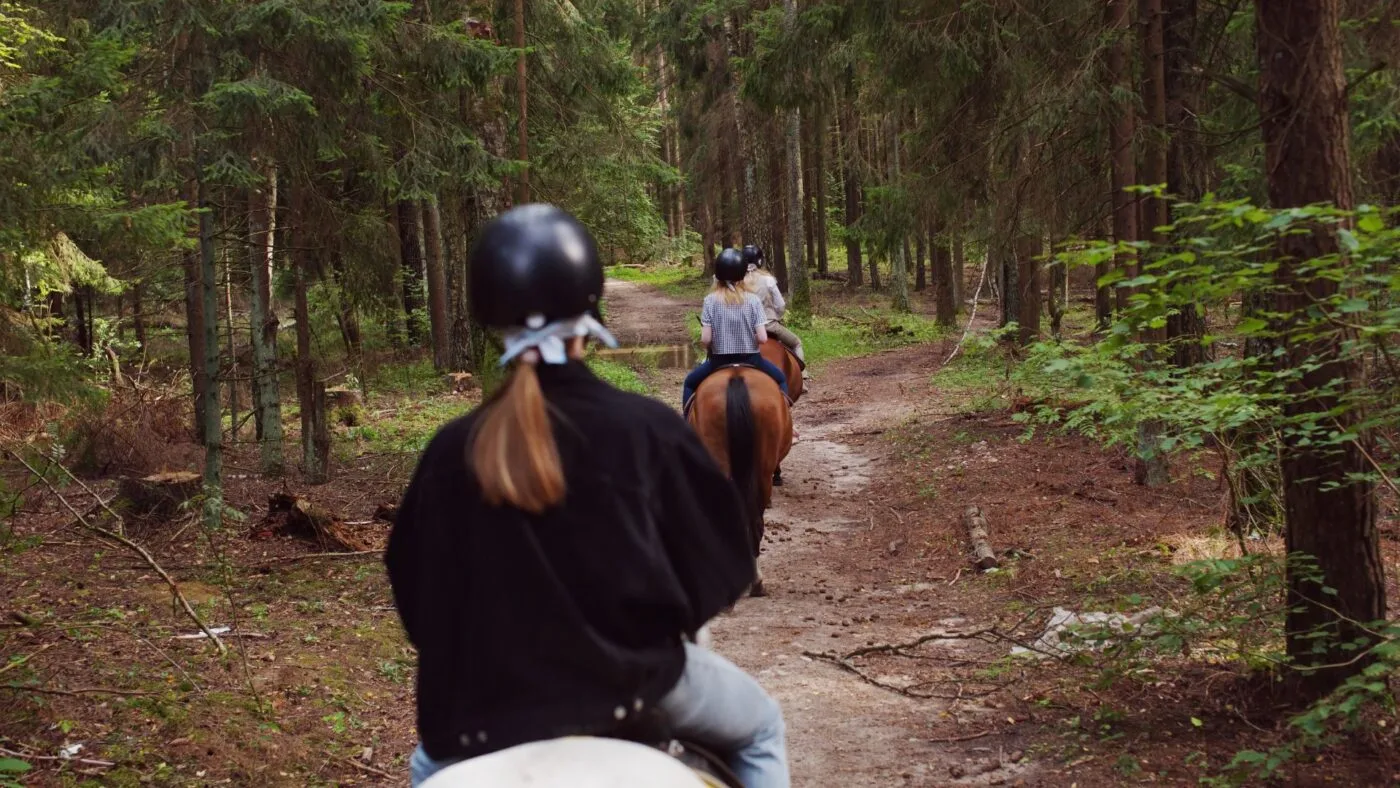
Uses of Clydesdale Horses
Draft Work: Historically, Clydesdales were prized for their ability to pull heavy loads on farms and in urban settings. Their strength and endurance made them invaluable for tasks requiring significant power.
Show and Exhibition: Today, Clydesdales are popular in show rings and exhibitions worldwide. Their gracefulness and majestic presence make them a favorite among spectators and enthusiasts.
Commercial Symbolism: The Budweiser Clydesdales, famous for their appearances in commercials and events, have become synonymous with the Clydesdale breed. They represent tradition, heritage, and the enduring spirit of these remarkable horses.
Care and Management of Clydesdales
Clydesdales require specific care and management to ensure their health and happiness. By understanding their unique needs, owners can provide a fulfilling life for these gentle giants.
Essential Health and Wellness
- Veterinary Care: Regular check-ups, vaccinations, deworming, and dental exams are crucial. Work closely with an equine veterinarian to establish a wellness program tailored to your Clydesdale’s needs.
- Special Health Considerations: Be aware of their susceptibility to certain conditions like laminitis and lymphedema. Proper farrier care is essential due to their heavier body weight.
- Anesthesia: There is a higher risk of recovery complications post-anesthesia due to size and muscle mass. Source
Housing and Living Environment
- Outdoor Housing: Provides numerous health benefits. Ensure they have access to adequate shelter and feed.
- Indoor Housing Requirements: Clydesdales need larger stalls than lighter breeds to accommodate their size comfortably.
- Cleanliness and Space: Maintain a clean and spacious living environment, whether indoors or outdoors.
Nutrition and Feeding
- Balanced Diet: A diet rich in quality hay or grass, supplemented with grains and minerals, supports their large size and energy needs. Monitor their intake to prevent obesity.
- Hydration: Ensure constant access to clean, fresh water. (More details follow in the next section)
Exercise and Activity
- Regular Exercise: Vital for their physical and mental well-being. Light exercise improves circulation and helps manage joint discomfort.
- Exercise Precautions: Be cautious with heavy exercise in hot climates to avoid overheating.
Grooming and Skin Care
- Regular Grooming: Essential for maintaining their coat and skin health. Pay special attention to their leg feathering to prevent conditions like mud fever.
- Sun Protection: Provide UV protection for Clydesdales with pink skin on their face to prevent sunburn.
Handling and Behavior
- Gentle Nature: Clydesdales are known for their docile temperament, making them suitable for various riders. However, clear and consistent communication is important due to their size and strength.
Clydesdale Care Essentials Reference Table
| Care Aspect | Details |
|---|---|
| Diet | Requires more feed and hay, varies with workload |
| Stabling | Larger stalls needed (24×24 feet recommended) |
| Farrier Costs | Higher due to size; includes shoeing and trimming |
| Tack Requirements | Specialized larger tack necessary |
| Grooming | Regular, especially for feathers to prevent skin issues |
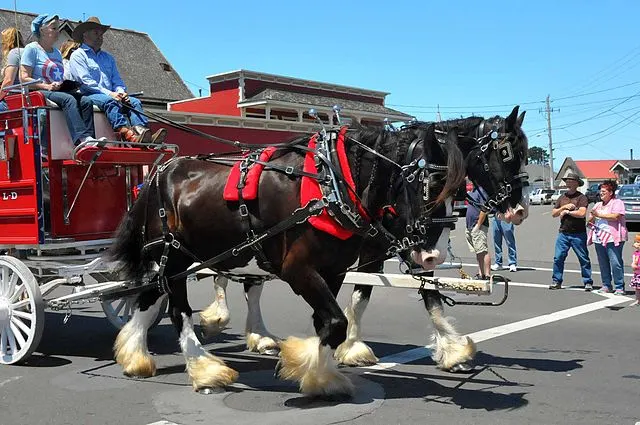
Dietary Concerns for Clydesdale Horses
Weight Maintenance
- Efficient Metabolism:
- Clydesdales are easy keepers, prone to obesity.
- Obesity risks: Joint problems, hoof strain.
- Diet Monitoring:
- Regular body condition checks.
- Adjust diet for healthy weight maintenance.
Forage
- Forage-Based Diet:
- Essential for digestive health and behavior.
- Clydesdales need more hay due to their larger size.
- Hay Requirements:
- About 40 lb (18 kg) per day for a 2000 lb horse.
- Low-starch, low-sugar hay recommended.
- Pasture Management:
- Use grazing muzzle to limit grass intake.
- Consider a dry lot and slow feeder for overweight horses.
Protein & Energy
- Forage-Only Diet:
- Sufficient for non-working horses.
- Additional Calories:
- Avoid grains and high-energy concentrates.
- Use beet pulp, bran, or fat supplements.
- Up to 20% of energy from fat for PSSM horses.
- Omega-3 Fatty Acids:
- Beneficial for inflammation and joint pain.
Nutritional Supplements
- Electrolytes:
- It is essential after work and in hot weather.
- Support muscle function and hydration.
Special Considerations
- Hydration:
- Constant access to clean, fresh water.
- Loose salt to encourage water intake.
- Customized Diet:
- Consult an equine nutritionist for personalized diet plans.
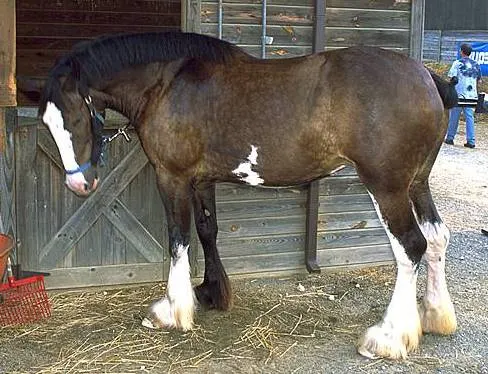
Health Issues in Clydesdale Horses
Genetic Diseases
- Polysaccharide Storage Myopathy (PSSM):
- Most common genetic disorder in draft horses.
- Caused by GYS1 gene mutation.
- Symptoms: Muscle tremors, gait abnormalities, tying up post-exercise.
- Management: Nutritional changes can alleviate symptoms.
- Prevalence: About 62% of draft horses in North America and Europe have the GYS1 mutation. Source.
Health Problems
- Fertility Issues:
- Draft breeds often have lower sperm concentrations. Source
- Mixed findings on dystocia risks in draft breed mares.
- Developmental Orthopedic Disorders:
- Rapid growth increases risk in young horses.
- Example: Osteochondritis dissecans.
- Degenerative Joint Disease:
- Heavy weight contributes to early onset in older Clydesdales. Source
- Chronic Progressive Lymphedema (CPL):
- Significant risk in Clydesdales.
- Symptoms: Lower limb swelling, worsening lesions.
- No cure; research is ongoing.
Riding a Clydesdales
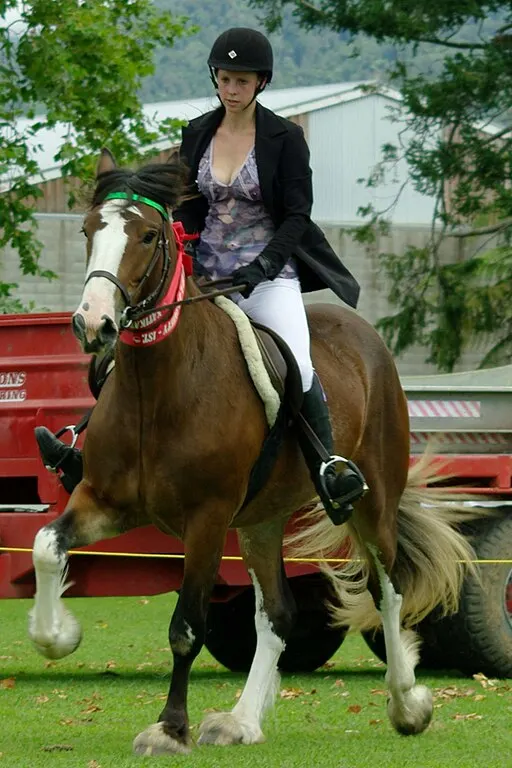
Riding a Clydesdale is a unique and wonderful experience. These powerful horses are not just novelties; they are excellent riding companions for various equestrian enthusiasts.
Equipping Yourself for the Clydesdale Experience
Riding a Clydesdale requires specific equipment and tack due to their impressive size and build. The goal is to ensure comfort and safety for both rider and horse.
- Tack Adjustments: Use specially sized equipment. This includes larger saddles, wider tree sizes for their broad backs, and longer girths. Bridles should also be proportionate to their larger head size.
- Mounting Tips: Their height makes mounting a challenge. Use a mounting block for ease and to evenly distribute the rider’s weight, reducing strain on the horse’s back.
- Handling Considerations: Clydesdales are gentle and responsive. Clear and consistent communication is key, as their size translates to greater strength.
The Unique Gait and Comfort of Clydesdales
Riding a Clydesdale offers a distinct experience due to their unique gait and comfort.
- Gait: They have a smooth, rhythmic gait. The gentle rocking motion at a trot is less jarring, and their steady canter provides a sense of security.
- Comfort: Their broad back offers a comfortable seat. Steady movements make for a smoother ride, ideal for novices or those with back issues.
- Handling: Known for their docile temperament, Clydesdales respond well to cues and are easy to manage, suitable for all rider levels.
Personal Experiences
- “Riding my friend’s Clydesdale, Duke, feels like being on a giant. His steps are steady and assured, instilling confidence even on trickier trails.” – Junior, an avid equestrian.
- “I was initially intimidated by their size. But riding one, I felt comfortable and secure. It’s a unique experience that every horse lover should try.” – Kevin, another rider.
Key Characteristics of Clydesdales
| Characteristic | Description |
|---|---|
| Trail Riding | Excellent for trail riding; calm and sure-footed |
| Recognition | Known for pulling Budweiser wagons in parades and commercials |
| Temperament | Calm, don’t spook easily, ideal for unpredictable trails |
| Gait | Smooth and comfortable, capable of maneuvering over rough terrain |
| Size Considerations | Height and width important for trail clearance and navigation |
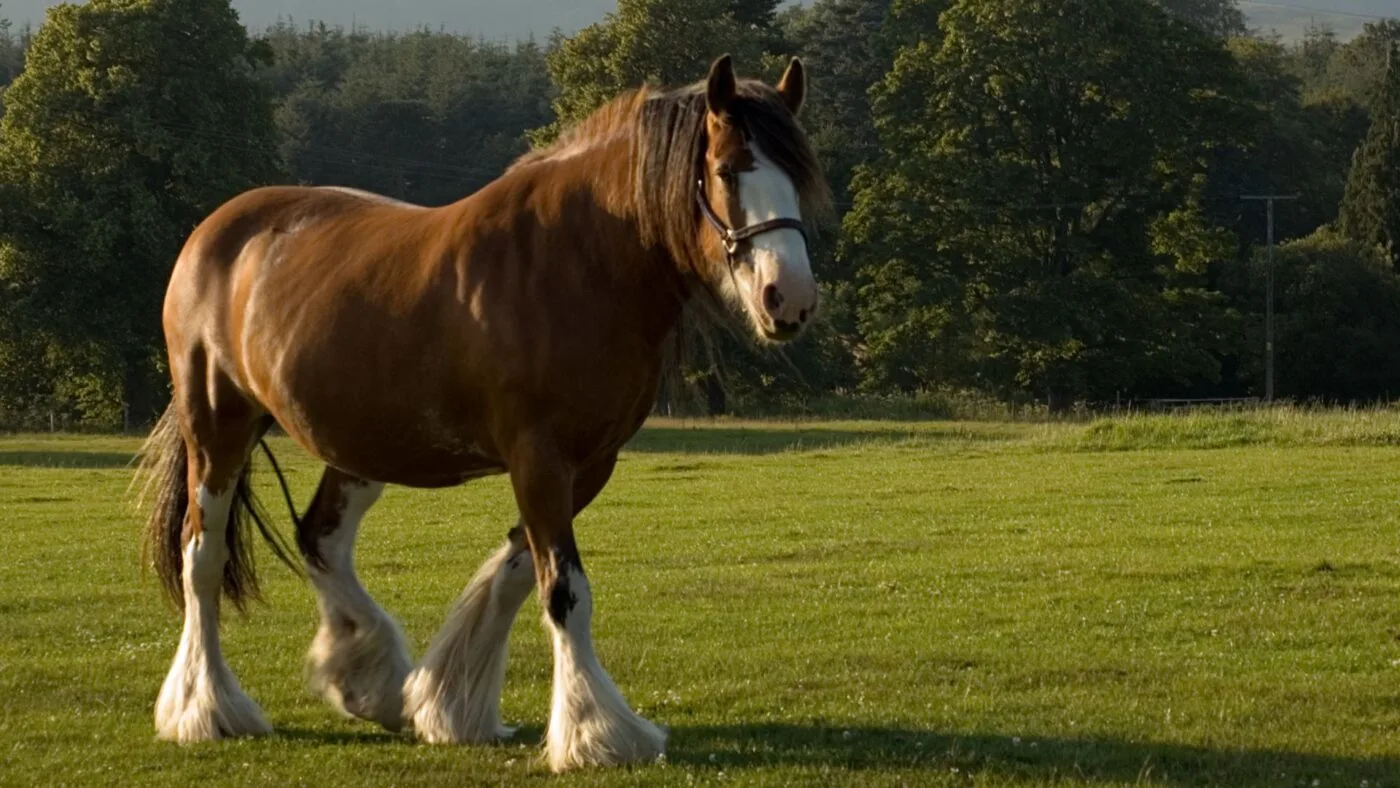
Clydesdales in Different Riding Disciplines
While not the first choice for competitive riding, Clydesdales have shown their capabilities in various disciplines, adding diversity to the equestrian world.
Recreational and Trail Riding
Clydesdales excel in recreational and trail riding due to their calm and steady nature.
- Trail Riding: Reliable and sure-footed on trails, they offer a higher vantage point and remain calm, even when encountering wildlife.
- Leisure Riding: Their gentle temperament makes them perfect for family rides, beginners, or therapeutic riding programs.
Clydesdales in the Competitive Arena
Clydesdales have potential in various equestrian sports, challenging traditional views of sport horses.
- Dressage: Suitable for lower levels of dressage due to their rhythmic gait and responsiveness.
- Show Jumping: Can participate in show jumping at lower heights. Their power is an asset, though size can be a limiting factor.
- Pulling Competitions: Clydesdales excel in pulling competitions, a testament to their incredible strength and endurance. These events showcase their ability to pull heavy weights, often several times their own body weight, making them crowd favorites in such competitions.
- Notable Clydesdales: “Budweiser,” a Clydesdale, has competed in dressage, showcasing their versatility in competitive disciplines.
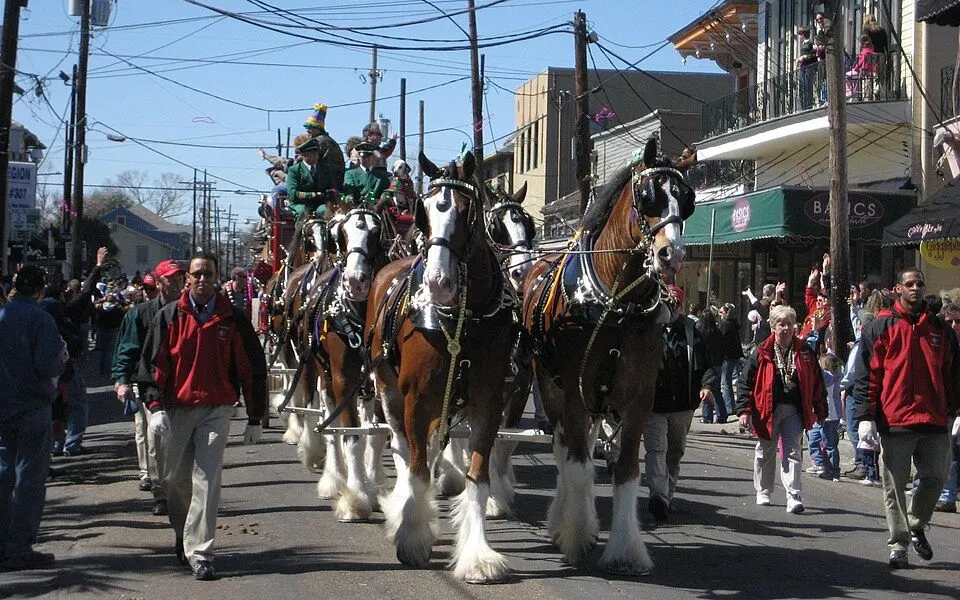
Real Stories from Clydesdale Riders
To truly understand the experience of riding Clydesdales, hearing directly from those who have formed bonds with these gentle giants is invaluable. Below are testimonials and stories from diverse Clydesdale riders, offering a glimpse into the unique relationship between these horses and their riders.
Check out this YouTube video featuring the first riding experience of a young Clydesdale horse.
Voices from the Saddle: Personal Experiences with Clydesdales
Testimonial 1: Darren, Recreational Rider “I’ve been riding Clydesdales for over five years, primarily for trail riding. My Clydesdale, Jasper. His calm demeanor makes every ride a peaceful experience. Despite his size, he’s incredibly gentle and intuitive, always seeming to know when I need a slower pace or a comforting nudge.”
Testimonial 2: Emily, First-Time Horse Owner: “As a first-time horse owner, choosing a Clydesdale was the best decision I could have made. My horse has been incredibly patient as I learn the ropes of horse care and riding. His steady nature has given me confidence, and the bond we’ve developed is something I cherish deeply. Riding him is always the highlight of my day.”
Stories from Clydesdale riders highlight the deep connections formed and the diverse roles these horses can play. From serene trail companions to competitive partners and therapeutic allies, Clydesdales continue to touch the lives of many, proving that their size is not a limitation but a unique attribute that enhances the riding experience.
Unique Aspects of Clydesdales
| Aspect | Detail |
|---|---|
| Pulling Capacity | Can pull over 2,000 pounds; some up to 8,000 pounds |
| Water Consumption | Up to 30 gallons per day |
| Foal Growth | Rapid, requiring careful monitoring |
| Color Variations | Commonly bay with white markings; also black, grey, chestnut |
Frequently Asked Questions (FAQs)
Are Clydesdales suitable for beginner riders?
Yes, their calm and gentle nature makes the Clydesdale horse breed suitable for beginner riders. However, their size requires some adjustments in handling and riding.
Which is stronger, a Clydesdale or a Belgian horse?
Belgian horses are generally considered stronger than Clydesdales. Known for their muscular build and compact size, Belgians are renowned for their exceptional strength, especially in draft and pulling competitions.
What is the lifespan of a Clydesdale?
Clydesdales horses typically live between 20 to 25 years, though this can vary based on care and health conditions.
Can Clydesdales be kept with other horse breeds?
Absolutely! Clydesdales are known for their friendly nature and can coexist peacefully with other horse breeds.
Conclusion: Clydesdale Horse Breed
The Clydesdale horse breed stands out as a symbol of power, grace, and history. From their origins in Scotland to their global recognition today, Clydesdales continue to captivate audiences with their beauty and versatility.
Whether working on a farm, parading in a show ring, or starring in a commercial, Clydesdales embody the essence of equine excellence. I hope this article provided you with insight into the unique characteristics and significance of the Clydesdale horse breed.
I sought to provide readers with a comprehensive understanding of one of the largest horse breeds in the world. Let us celebrate the Clydesdale and appreciate the beauty and heritage they bring to the world of horses.
Call to Action
We would love to hear from you! Whether you’re a seasoned Clydesdale rider or someone just starting to explore the possibility of riding these magnificent horses, your experiences and questions are valuable to our community.
Share Your Story or Ask a Question
- Share Your Clydesdale Story: Have you had a memorable experience with a Clydesdale? Share your story in the comments section below. Your experiences can inspire and inform others!
- Ask a Clydesdale-Related Question: Have any questions about riding or caring for Clydesdales? Feel free to ask in the comments or contact me directly at [email protected]. We’re here to help!
Thank you for reading, and I look forward to connecting with you, whether it’s through our newsletter, direct communication, or in the comments section. Here’s to the thrilling journey of racehorse ownership!
Participate in Our Poll
I’m curious to know your thoughts! Participate in our poll: Your input will help us tailor future content to your interests.
Meet Miles Henry
An avid equestrian and seasoned racehorse owner, Miles Henry brings his extensive experience to the equine world, proudly associating with the AQHA, The Jockey Club, and various other equine organizations. Beyond the racetrack, Miles is an accomplished author, having published various books about horses, and is a recognized authority in the field, with his work cited in multiple publications.
🔗 Connect with Miles:
Twitter
Facebook
YouTube: Check out race highlights, horse care tips, and more!

